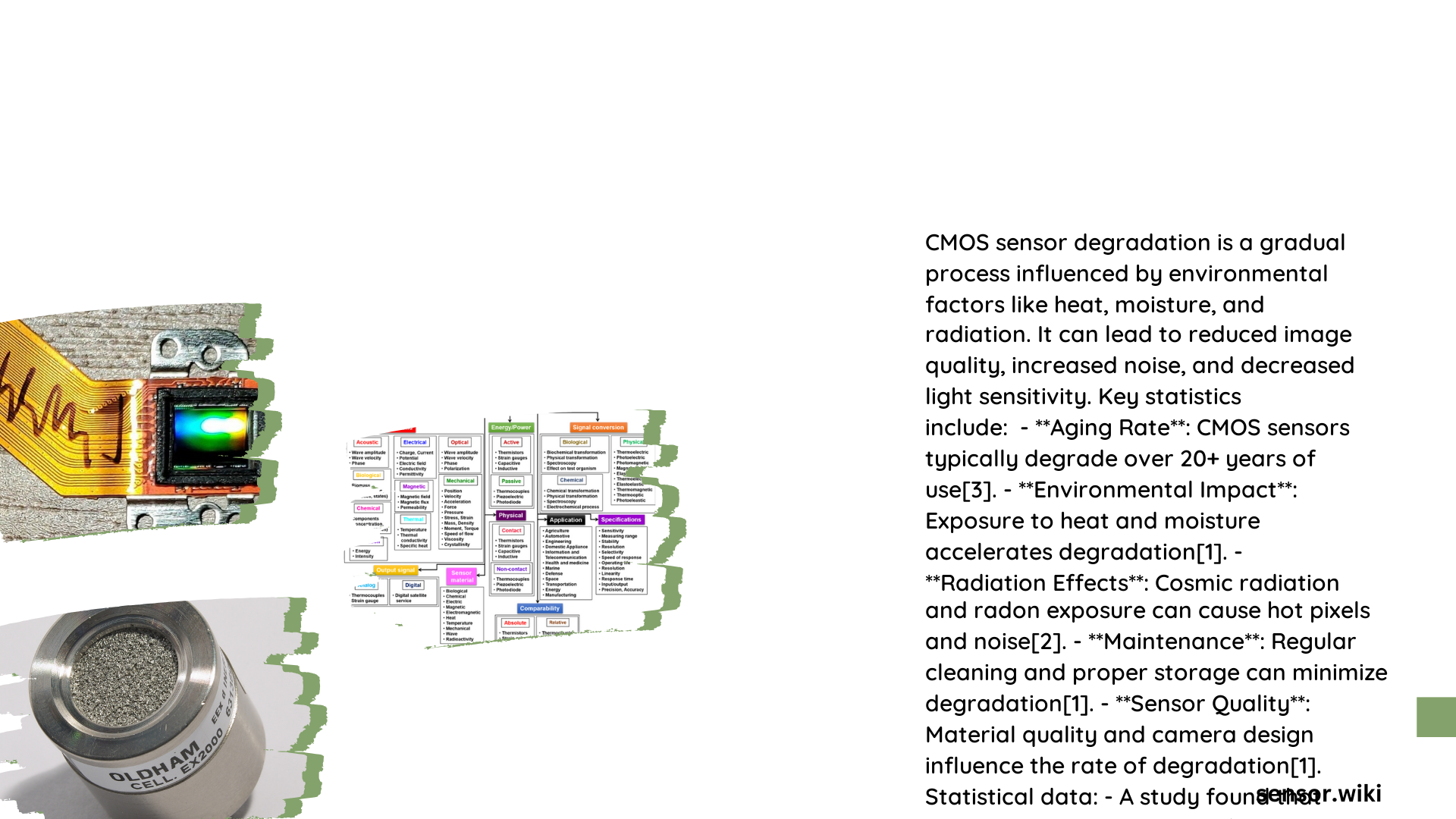CMOS Sensor Degradation: A Comprehensive Technical Overview
CMOS sensor degradation represents a critical challenge in electronic imaging systems, where progressive performance decline occurs through complex material and operational mechanisms. Imaging technologies experience systematic reliability challenges involving temperature sensitivity, radiation exposure, and intrinsic material limitations that progressively compromise sensor functionality and signal quality.
What Causes CMOS Sensor Performance Decline?
CMOS sensors degrade through multiple interconnected mechanisms:
- Thermal Stress Factors
- Temperature-induced electron mobility changes
- Thermal expansion of semiconductor materials
-
Microscopic structural alterations
-
Radiation-Induced Damage
- Gamma radiation exposure
- Electron displacement in semiconductor lattice
- Accumulated charge trap generation
How Do Environmental Conditions Impact Sensor Reliability?
| Environmental Factor | Degradation Impact | Typical Lifetime Reduction |
|---|---|---|
| High Temperature | Accelerated decay | 30-50% performance decline |
| Humidity | Corrosion risk | 20-40% reliability decrease |
| Radiation Exposure | Signal noise | 15-25% signal quality loss |
What Are the Primary Failure Mechanisms?
Linearity and Dark Rate Degradation
- 10% linearity degradation indicates potential sensor failure
- Predictive lifetime models suggest over 112 years operational capability at standard conditions
- Voltage acceleration factors play crucial role in performance prediction
Pixel-Level Performance Decline
- Smaller pixel sizes increase defect probability
- Defect rates follow power law relationship with pixel dimensions
- Signal-to-Noise Ratio (SNR) progressively deteriorates
What Symptoms Indicate CMOS Sensor Degradation?
Key performance indicators include:
– Increased noise levels
– Reduced signal clarity
– Pixel response variability
– Hot pixel generation
– Threshold voltage shifts
Quantitative Degradation Assessment
Researchers utilize sophisticated measurement techniques:
– Arrhenius lifetime prediction models
– Voltage acceleration factor calculations
– Threshold voltage shift measurements
– Noise characterization protocols
Mitigation and Prevention Strategies
- Implement robust thermal management
- Use radiation-hardened sensor designs
- Develop advanced material technologies
- Employ predictive maintenance protocols
- Conduct regular performance diagnostics
Technical Recommendations
- Monitor sensor performance consistently
- Establish baseline performance metrics
- Develop comprehensive environmental testing protocols
- Invest in advanced sensor design technologies
Conclusion
CMOS sensor degradation represents a complex interplay of material science, thermal dynamics, and operational stress factors. Understanding these mechanisms enables more reliable imaging system design and extended operational lifespans.

